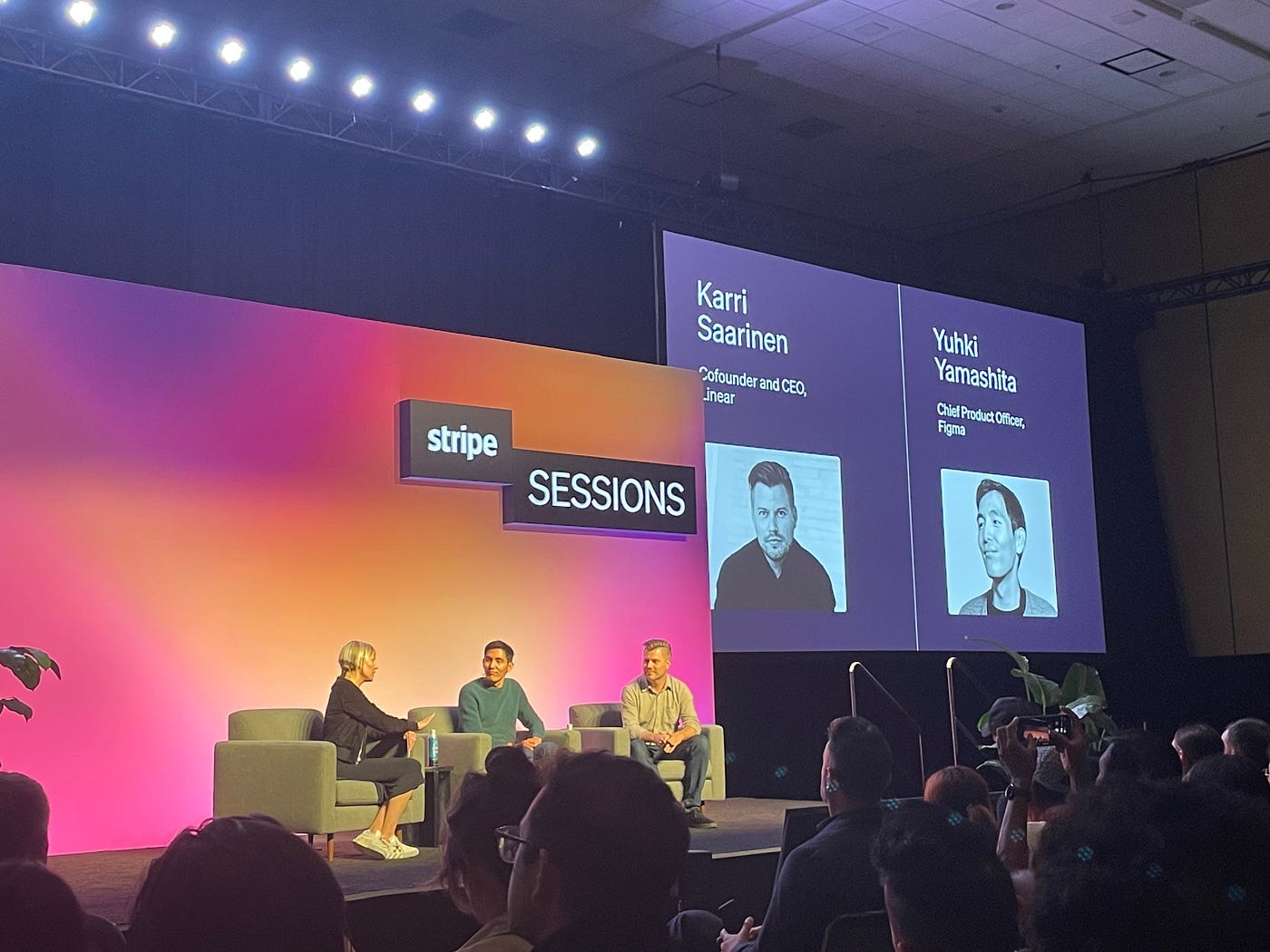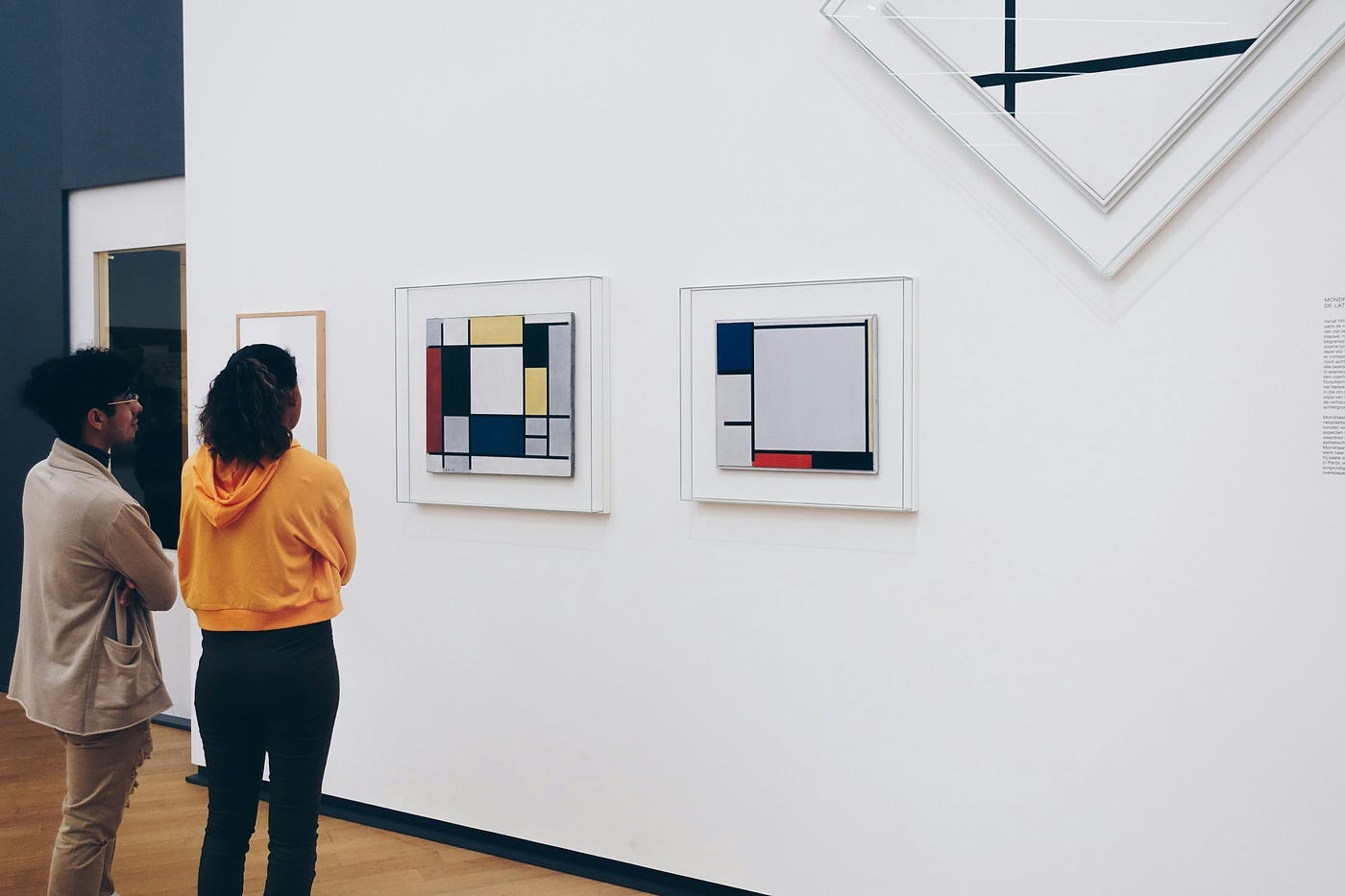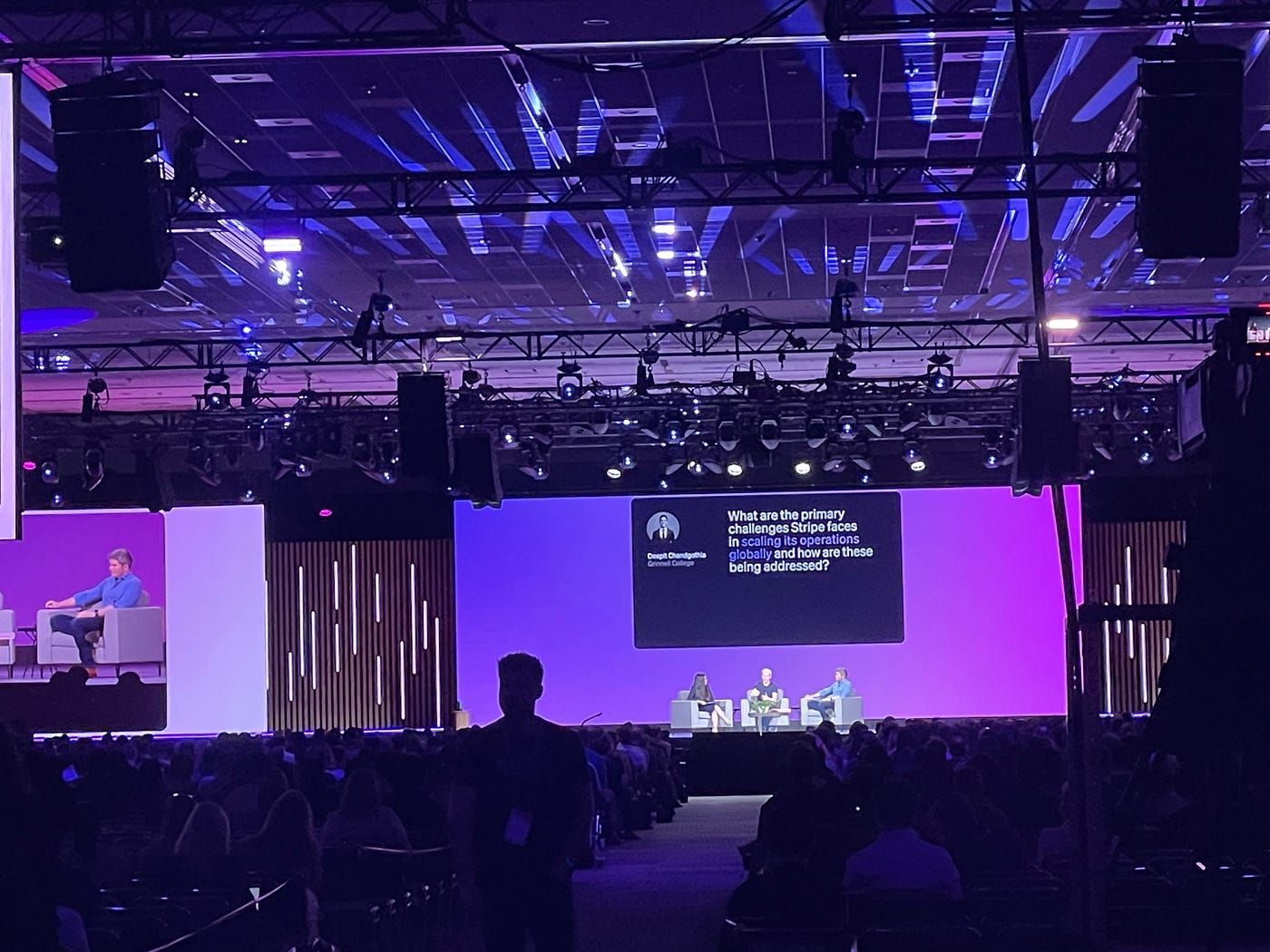Crafting Great Software Products: The Function of Building for Beauty
This post was originally shared on May 1, 2024 on Medium. I'm experimenting with Substack, and figured a good start would be to migrate my earlier content here.

Craft and Beauty in Creating Excellent Software Products
After Stripe Sessions last week in San Francisco, a conference to “discuss the most important internet economy trends”, I found myself reflecting less on the future of payments and more on the future of work. Specifically, excited to explore what the future of software product and development work will look like as AI becomes as ubiquitously used as it is talked about today. One of the breakout talks that was most striking was hosted by Katie Dill, the Head of Design at Stripe. She facilitated a discussion on “Craft and beauty: The business value of form in function” with Karri Saarinen, Cofounder CEO of Linear, and Yuhki Yamashita, Chief Product Officer at Figma.

Katie kicked off by sharing some fascinating observations around observing and measuring beauty. While “beauty is in the eye of the beholder” is a popular phrase and the subjectivity of aesthetics is often taken for granted, there is more than meets the eye. She shared the example of a Mondrian artwork compared to a fake version with slight design differences.

A quick poll of the audience reflected the wider statistical truth that over half of people, regardless of their art experience, can recognize the real Mondrian over the fake version. The way Mondrian deliberately laid his lines of paint is more beautiful, and his decision-making process reflects a rationale beyond just “looks nice”.
How Valuable Is Quality For A Business?
Stripe, Figma, and Linear are companies known for their opinionated and thoughtful approach to craft and design. This care shows up in details from the branding to the specifics of the user experience and even the emails their customers receive. Katie shared an example of an email for new Stripe users that saw double-digit percentage improvements in performance after design changes made the email not only more beautiful, but also more legible and effective.
Meticulous Craft: Decision-Making, Product, and Culture
One of Stripe’s core principles is “meticulous craft” and all members of the panel discussed the importance of craft in your company’s culture and people. Yuhki, for instance, called out that “if you need an OKR to convince someone of quality, you probably have the wrong team.” Similarly, Karri Saarinen said “quality doesn’t happen on its own, you need to push for it.” He further distinguished between craft being the activity and work that you put in, quality and beauty being the output that reflects the impact of that effort.
In this discussion, a key focus was around how craft and beauty and their inherent “quality” relate back to business value. How do you measure quality? Katie described three paths to achieve this goal. First, talking to your users, e.g. qualitative user research. Second, looking at data, and being specific about the metrics you choose to represent quality. Third, look to the team and if people take pride in their work and what you are making, then it is a good sign.
An example Yukhi later gave to embody evaluating and building a quality experience came from his past work at Uber. The team liked to imagine the “perfect” rideshare experience from the rider perspective. When imagining a perfect ride, you likely are thinking of as frictionless and fast an experience as possible. This was something we often thought about during my time working on the pickup experience team at Lyft as well.

Perhaps you imagine a one-click magical experience of calling a ride with the driver promptly arriving, you hopping in a clean and spacious car, and then arriving at your destination. However, the reality actually reflected that having additional touch points,like the ability to text or call your driver, could really improve the rider’s experience. While a “call driver” feature does not necessarily fit the imagined “ideal” experience, prioritizing this touchpoint creates a higher-quality experience for real riders in situations where a phone chat might make the difference between a completed pick up and a delayed or missed one.
Functional Beauty: Prioritizing Quality
Focusing specifically on functionality in beauty, there were a few observations. Yukhi emphasized the need to diligently evaluate if you are solving for a symptom or a root cause with what you are building. While solving for a symptom might seem simpler, you are likely creating a superficial solution that fails to actually address the core issue. Similarly, Karri discussed prioritization and suggested “don’t compromise on the main thing” you are focused on as a team. For Linear in their early days, this meant not compromising on core product decisions but putting less effort into non-core features like the help center in order to move faster. For Karri, this was an intuitive choice focused on “how and why” his business existed and what it is fundamentally about at its core.
Similarly, the discussion captured specifically design and quality for business (enterprise) as compared to consumer products or other categories. For decades, it was acceptable for enterprise software solutions to focus on functionality alone and ignore beautiful design. Karri challenged this, calling out that “business tools should not be worse than my personal tools, if anything it should be better.” Yukhi observed that the distinction between enterprise and consumer software design is getting thinner.
Beauty and the Beast of Workplace and Enterprise Software
For workplace products, users might care more about efficiency and productivity, and less about novelty. Moreover, thinking about the end use case is critical to designing a great product; Karri gave the example of dishwashers. Professional grade usually means more powerful, durable, simpler, and more focused. For a restaurant, a dishwasher might be simpler (fewer features) but also faster and more performant. This concept could be extended to professional quality software.
Extensibility: Continuous Craft for Software Products
While this Breakout talk was a highlight for me in Stripe Sessions, the theme was further reflected the next morning in the main stage AMA with Patrick and John Collison, Cofounders of Stripe, facilitated by Fidji Simo, the CEO of Instacart. Throughout the other presentations, whether it was explicitly discussed or implicit in the content and products shared, I continued to observe the themes of craft, quality, and beauty in software development and their impact on performance and business.

Do Users Love Your Product? The Future of Quality in Software Products
Karri asserted that “if people aren’t raving about your product, you probably don’t have a good product. Great products create fans.” Beyond the business value in individual product quality decisions, product quality is a potential moat for a software business.
This represents an interesting perspective, especially in light of a new wave of tools and products leveraging AI to help more people generate their own designs and digital products. Low/no code solutions like Bubble or Webflow have been around for a while, yet new solutions to help anyone create software are emerging left-and-right. While it is exciting to see new tools engineered to empower the next generation of founders and builders, regardless of their technical skills, I wonder: what will this future look like? How do we avoid a wave of generic, beauty-less new technology products created, not crafted, with AI tools?
AI has the potential to transform how software gets built and this technology is already starting to do so, as developers rely on products like GitHub Copilot to write code faster and marketers rely on tools like ChatGPT for quicker content generation. However, the core value in AI is not that it unlocks the ability to mindlessly create; instead, I believe it is that AI unlocks the ability to learn and iterate faster, creating something mindfully and then more easily iterating and improving on this starting point. In a world where AI increases productivity and generation of software products, craftsmanship becomes even more important in differentiating great products and user experiences from the rest.
Final Thoughts
In my experience working on new technology products at startups such as Kamcord, Lyft, and now as a founder, moving fast is of the utmost importance. However, I resist the notion that there will always be a tradeoff between speed and quality. In delivering great products, over and over, it’s about speed AND quality. Scope of your product work reflects what you’re able to deliver at the appropriate speed and with the appropriate quality — and even beauty.
While the goal of this post was primarily to recap my observations at Stripe Sessions, building quality products for companies and consumers alike is a passion of mine. Creating delightful experiences that add value to users’ lives cannot be done without craft. This is something I have experienced over and over while working on products for all kinds of customers.
Right now, our team is working on something new with the intent to help software teams build high-quality products, faster, and with more delightful and productive collaboration.

If you’d like to learn more about what we’re building or discuss how quality, craft, and beauty contribute to building uniquely great software products, please drop a line.


